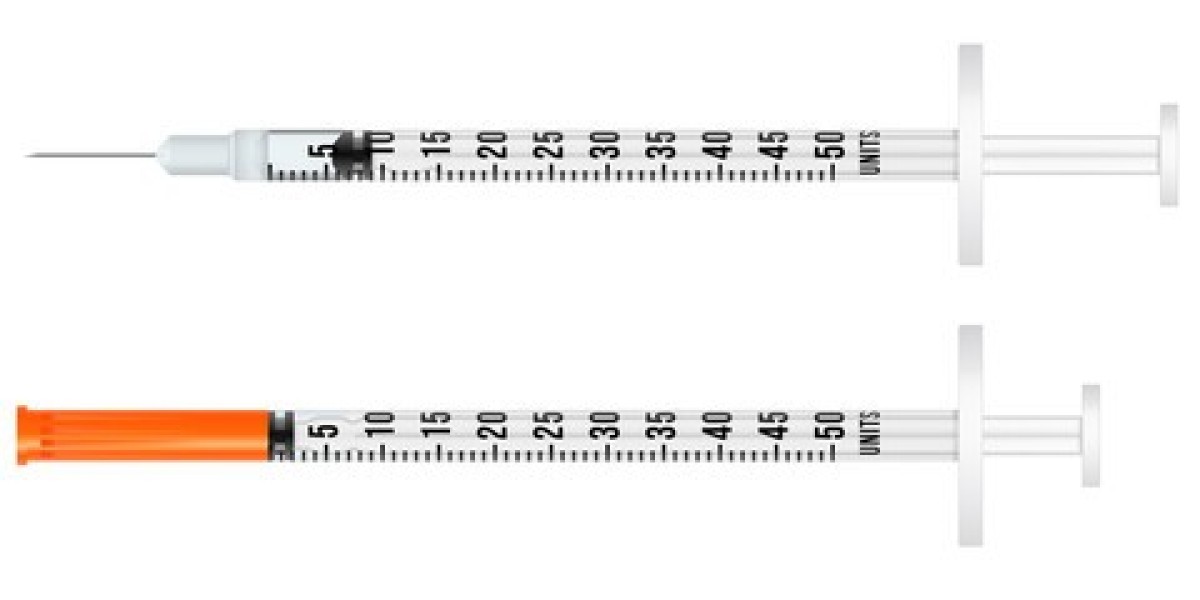Insulin syringes play a crucial role in the management of diabetes, a condition that affects millions of people worldwide. Whether you're newly diagnosed or have been living with diabetes for years, understanding insulin syringes is essential for effective treatment. In this guide, we'll cover everything you need to know about insulin syringes, from their components to proper usage and disposal.
What Are Insulin Syringes? Insulin syringes are specialized medical devices designed to administer insulin, a hormone that regulates blood sugar levels in the body. These syringes are specifically calibrated to deliver precise doses of insulin subcutaneously (under the skin). They consist of several components, including a barrel, plunger, needle, and protective cap.
Types of Insulin Syringes: There are various types of insulin syringes available on the market, differentiated by their needle gauge, needle length, and capacity. Common needle gauges range from 28 to 31, with higher gauge numbers indicating thinner needles. Needle length typically ranges from 5/16 inch to 1/2 inch. Syringe capacities can vary from 0.3 mL to 1 mL, allowing for different insulin dosage requirements.
Choosing the Right Insulin Syringe: Selecting the appropriate insulin syringe depends on factors such as insulin dosage, needle preference, and injection site. Your healthcare provider can help you determine the most suitable syringe for your needs. Factors to consider include needle length for comfortable injections, needle gauge for minimal discomfort, and syringe capacity for accurate dosing.
How to Use Insulin Syringes: Using insulin syringes correctly is crucial for effective insulin delivery and diabetes management. Follow these steps for proper usage:
- Wash your hands thoroughly with soap and water.
- Gather your insulin vial, syringe, and alcohol swab.
- Roll the insulin vial between your palms to mix the insulin (if necessary).
- Clean the rubber stopper of the insulin vial with an alcohol swab.
- Remove the protective cap from the syringe needle.
- Pull the plunger back to draw air into the syringe equal to your insulin dose.
- Insert the needle into the insulin vial and inject the air into it.
- Turn the vial and syringe upside down, ensuring the needle tip is submerged in insulin.
- Pull the plunger back to draw your prescribed insulin dose into the syringe.
- Remove any air bubbles by tapping the syringe and pushing the plunger slightly.
- Choose an injection site, such as the abdomen, thigh, or upper arm.
- Pinch a fold of skin at the injection site and insert the needle at a 90-degree angle.
- Push the plunger down slowly to inject the insulin.
- Hold the needle in place for a few seconds before withdrawing it.
- Dispose of the used syringe properly in a sharps container.
Tips for Insulin Injection:
- Rotate injection sites to prevent tissue damage and ensure consistent insulin absorption.
- Avoid injecting into areas with scars, bruises, or lumps.
- Allow the insulin to reach room temperature before injection to reduce discomfort.
- Keep track of your injection sites and rotate them systematically to prevent lipohypertrophy (thickened skin).
Proper Disposal of Insulin Syringes: After use, insulin syringes must be disposed of safely to prevent accidental needle sticks and contamination. Follow these guidelines for proper disposal:
- Place used syringes in a designated sharps container immediately after use.
- Seal the sharps container securely to prevent needle exposure.
- Do not overfill the sharps container; dispose of it according to local regulations when full.
- Never dispose of used syringes in household trash or recycling bins.
- Consult your healthcare provider or local waste management authority for guidance on proper disposal methods.
Conclusion: Insulin syringes are indispensable tools for individuals with diabetes, allowing for precise insulin delivery and effective blood sugar control. By understanding the types, usage, and disposal of insulin syringes, you can ensure safe and efficient diabetes management. Remember to consult your healthcare provider for personalized guidance on insulin therapy and syringe selection. With proper knowledge and practice, you can confidently administer insulin injections and maintain optimal health with diabetes.









